The Potential of Fiber-Reinforced Concrete to Reduce the Environmental Impact of Concrete Construction
Abstract
1. Introduction
2. Influence of Material and Mechanical Parameters on Structural Response and Toughness
3. Material Considerations
4. Considerations for Bending Design
5. Considerations for Plastic Design of Flat Slabs
5.1. Lower Bound of the Resistance
5.2. Upper Bound of the Resistance
5.3. Comments on the Upper and Lower Bounds, Further Checks
5.4. Discussion on Other Typologies and Potential Implications on Carbon Footprint
- Concrete C30/37 (fck = 30 MPa) CEM II for reinforced concrete elements, considering 0.12 kg CO2-eq/kg as the reference value of the unitary CO2-eq footprint [15]. Such value and cement types are selected as representative of current construction practice.
- Concrete C30/37 (fck = 30 MPa) CEM III for FRC elements, considering 0.05 kg CO2-eq/kg as the reference value of the unitary CO2-eq footprint [15,20]. Such value is selected in order to highlight the potential of FRC to reduce the unitary carbon footprint. It shall be noted that other optimizations are possible, such as reducing the concrete strength if statically admissible.
- Reinforcement steel B500 (fyk = 500 MPa) for both reinforced concrete and FRC solutions, considering 0.5 kg CO2-eq/kg as a reference value of the unitary CO2-eq footprint [15]
- Polypropilene fibers, considering a ratio of 10 kg/m3. For the fibers, it is adopted a reference value of the unitary CO2-eq footprint equal to 4 kg CO2-eq/kg according to [20]
6. Conclusions
- Design of the material properties of FRC can efficiently provide mixes associated with low embodied carbon footprint and relatively tough or ductile response after first cracking. Such mix designs are typically associated with low values of the compressive strength of concrete (sufficient in any case for usual design applications).
- Ensuring a tough or ductile response of the material is advised as it can lead to internal force redistributions and as the strength of all elements in the structural resistance can be taken advantage of.
- Plastic design methods are suitable for the bending design of FRC in terms of resistance and particularly of the associated kinematics and mechanism at failure.
- Concerning the field of sustainability, the design of slabs with optimized FRC mixes and structural typologies leads to significant savings in terms of the expected carbon footprint in construction. For instance, designing FRC waffle slabs with CEM III cement may lead to cutting CO2-eq emissions by half or even two-thirds when compared to typical current solutions based on reinforced concrete flat slabs with CEM II cement.
Author Contributions
Funding
Data Availability Statement
Conflicts of Interest
Notation
| A | cross-sectional area |
| Ac | concrete cross-sectional area |
| Ec | modulus of elasticity of concrete |
| F | force |
| Fcr | force at the onset of cracking |
| Fpl | plastic resistance |
| Khar | hardening stiffness |
| Ksof | softening stiffness |
| L | bay span |
| ME | acting moment |
| MR | bending resistance |
| R | column reaction |
| W | work |
| We | external work |
| Wi | internal work (dissipation) |
| b | width |
| fcp | uniaxial compressive strength of concrete |
| fcp | uniaxial plastic compressive strength of concrete |
| fct | tensile strength of concrete |
| h | height, thickness |
| span | |
| m | unitary moment |
| mR | unitary bending strength |
| qE | acting load |
| w | crack opening |
| wres | residual crack opening (crack opening when tensile stress vanishes) |
| xpl | depth of plastic zone |
| displacement, elongation | |
| displacement at the onset of cracking | |
| elastic displacement | |
| residual displacement at wres | |
| strain | |
| elastic strain | |
| average strain in smeared cracked region | |
| internal angle of friction of concrete | |
| rotation | |
| stress |
References
- Faruque, M.O.; Rabby, M.A.J.; Hossain, M.A.; Islam, M.R.; Rashid, M.M.U.; Muyeen, S.M. A comparative analysis to forecast carbon dioxide emissions. Energy Rep. 2022, 8, 8046–8060. [Google Scholar] [CrossRef]
- Rosa, E.A.; Dietz, T. Human drivers of national greenhouse-gas emissions. Nat. Clim. Change 2012, 2, 581–586. [Google Scholar] [CrossRef]
- Sarkar, M.S.K.; Sadeka, S.; Sikdar, M.M.H. Energy consumption and CO2 emission in Bangladesh: Trends and policy implications. Asia Pac. J. Energy Environ. 2018, 5, 41–48. [Google Scholar] [CrossRef]
- Pang, R.Z.; Deng, Z.Q.; Hu, J.L. Clean energy use and total-factor efficiencies: An international comparison. Renew. Sustain. Energy Rev. 2015, 52, 1158–1171. [Google Scholar] [CrossRef]
- Lu, M.; Lai, J. Review on carbon emissions of commercial buildings. Renew. Sustain. Energy Rev. 2020, 119, 109545. [Google Scholar] [CrossRef]
- Burciaga, U.M. Sustainability assessment in housing building organizations for the design of strategies against climate change. HighTech Innov. J. 2020, 1, 136–147. [Google Scholar] [CrossRef]
- Wang, Z.; Chen, H.; Huo, R.; Wang, B.; Zhang, B. Marginal abatement cost under the constraint of carbon emission reduction targets: An empirical analysis for different regions in China. J. Clean. Prod. 2020, 249, 119362. [Google Scholar] [CrossRef]
- Hill, R.C.; Bowen, P.A. Sustainable construction: Principles and a framework for attainment. Constr. Manag. Econ. 1997, 15, 223–239. [Google Scholar] [CrossRef]
- Worrell, E.; Price, L.; Martin, N.; Hendriks, C.; Meida, L.O. Carbon dioxide emissions from the global cement industry. Annu. Rev. Energy Environ. 2001, 26, 303–329. [Google Scholar] [CrossRef]
- Zhu, Q. CO2 Abatement in the Cement Industry; IEA Clean Coal Centre: London, UK, 2011. [Google Scholar]
- Deja, J.; Uliasz-Bochenczyk, A.; Mokrzycki, E. CO2 emissions from Polish cement industry. Int. J. Greenh. Gas Control 2010, 4, 583–588. [Google Scholar] [CrossRef]
- Moumin, G.; Ryssel, M.; Zhao, L.; Markewitz, P.; Sattler, C.; Robinius, M.; Stolten, D. CO2 emission reduction in the cement industry by using a solar calciner. Renew. Energy 2020, 145, 1578–1596. [Google Scholar] [CrossRef]
- Thomas, M.; Barcelo, L.; Blair, B.; Cail, K.; Delagrave, A.; Kazanis, K. Lowering the carbon footprint of concrete by reducing clinker content of cement. Transp. Res. Rec. 2012, 2290, 99–104. [Google Scholar] [CrossRef]
- Yang, K.H.; Jung, Y.B.; Cho, M.S.; Tae, S.H. Effect of supplementary cementitious materials on reduction of CO2 emissions from concrete. J. Clean. Prod. 2015, 103, 774–783. [Google Scholar] [CrossRef]
- Regúlez, B.; Faria, D.; Todisco, L.; Ruiz, M.F.; Corres, H. Sustainability in construction: The urgent need for new ethics. Struct. Concr. 2023, 24, 1893–1913. [Google Scholar] [CrossRef]
- Pujadas, P.; Blanco, A.; Cavalaro, S.; Aguado, A.; Grünewald, S.; Blom, K.; Walraven, J.C. Plastic fibres as the only reinforcement for flat supended slabs: Parametric study and design considerations. Constr. Build. Mater. 2014, 70, 88–96. [Google Scholar] [CrossRef]
- Pons, O.; Casanovas-Rubio, M.; Armengou, J.; de la Fuente, A. Sustainability-driven decision-making model: Case study of fiber-reinforced concrete foundation piles. J. Constr. Eng. Manag. 2021, 147, 04021116. [Google Scholar] [CrossRef]
- de la Fuente, A.; Casanovas-Rubio, M.; Pons, O.; Armengou, J. Sustainability of column-supported RC slabs: Fibre reinforcement as an alternative. J. Constr. Eng. Manag. 2019, 145, 1–12. [Google Scholar] [CrossRef]
- Aidarov, S.; Nadazdi, A.; Pugach, E.; Tosic, N.; de la Fuente, A. Cost oriented analysis of fibre reinforced concrete column-supported flat slabs construction. J. Build. Eng. 2022, 51, 104205. [Google Scholar] [CrossRef]
- Ruiz, M.F.; Redaelli, D.; Arroyo, A.N.; López, A.M.D. Bourqui and A. de la Fuente Antequera, Macrosythetic fibres as replacement of conventional steel reinforcement for concrete partition walls. Struct. Concr. 2024, 25, 1031–1051. [Google Scholar] [CrossRef]
- Buratti, N.; Ferracuti, B.; Savoia, M. Concrete crack reduction in tunnel linings by steel fibre-reinforced concretes. Constr. Build. Mater. 2013, 44, 249–259. [Google Scholar] [CrossRef]
- Passuello, A.; Moriconi, G.; Shah, S.P. Cracking behavior of concrete with shrinkage reducing admixtures and PVA fibers. Cem. Concr. Compos. 2009, 31, 699–704. [Google Scholar] [CrossRef]
- Ruiz, R.; Ruiz, M.F.; Todisco, L.; Corres, H. Shear resistance of prestressed HPFRC beams without stirrups: A mechanical analysis of shear-transfer actions based on detailed experimental measurements. Eng. Struct. 2024, 306, 117711. [Google Scholar] [CrossRef]
- Tang, P.; Amin, A.; Gilbert, R.; Kaufmann, W. Shrinkage cracking in restrained FRC members containing conventional reinforcement. Struct. Concr. 2024, 25, 1006–1017. [Google Scholar] [CrossRef]
- Hordijk, D.A. Local Approach to Fatigue of Concrete. Doctoral Thesis, Technische Universiteit Delft, Delft, The Netherlands, 1991. [Google Scholar]
- Nielsen, M.; Hoang, L. Limit Analysis and Concrete Plasticity, 3rd ed.; CRC Press: Boca Raton, FL, USA, 2011. [Google Scholar]
- Sigrist, V. Zum Verformungsvermögen von Stahlbetonträgern. Ph.D. Thesis, ETH Zurich, Zürich, Switzerland, 1995. [Google Scholar]
- Ruiz, M.F. The influence of the kinematics of rough surface engagement on the transfer of forces in cracked concrete. Eng. Struct. 2021, 231, 111650. [Google Scholar] [CrossRef]
- CEN 1992-1-1:2023; Eurocode 2: Design of Concrete Structures—Part 1-1: General Rules, Rules for Buildings, Bridges and Civil Engineering Structures. CEN: Brussels, Belgium, 2023.
- Muttoni, A. Die Anwendbarkeit der Plastizitätstheorie in der Bemessung von Stahlbeton 176; Springer: Berlin/Heidelberg, Germany, 2013. [Google Scholar]
- Alberti, M.G.; Enfedaque, A.; Gálvez, J.; Cortez, A. Optimisation of fibre reinforcement with a combination strategy and through the use of self-compacting concrete. Constr. Build. Mater. 2020, 235, 117289. [Google Scholar] [CrossRef]
- EN 14651:2007+A1; Test Method for Metallic Fibre Concrete. Measuring the Flexural Tensile Strength (Limit of Proportionality (LOP), Residual). CEN: Brussels, Belgium, 2007.
- Schneider, M. The cement industry on the way to a low-carbon future. Cem. Concr. Res. 2019, 124, 105792. [Google Scholar] [CrossRef]
- He, C.; Osbaeck, B.; Makovicky, E.P. ozzolanic reactions of six principal clay minerals: Activation, reactivity assessments and technological effects. Cem. Concr. Res. 1995, 25, 1691–1702. [Google Scholar] [CrossRef]
- ECRA. Development of State of the Art-Techniques in Cement Manufacturing: Trying to Look Ahead; CSI/ECRA-Technology Papers 2017, A-2016/2305; European Cement Research Academy, ECRA: Düsseldorf, Germany, 2017. [Google Scholar]
- Antoni, M.; Rossen, J.; Martirena, F.; Scrivener, K. Cement substitution by a combination of metakaolin and limeston. Cem. Concr. Res. 2012, 42, 1579–1589. [Google Scholar] [CrossRef]
- Behfarnia, K.; Behravan, A. Application of high performance polypropylene fibers in concrete lining of water tunnels. Mater. Des. 2014, 55, 274–279. [Google Scholar] [CrossRef]
- Pujadas, P.; Blanco, A.; Cavalaro, S.; de la Fuente, A.; Aguado, A. Fibre distribution in macro-plastic fibre reinforced concrete slab-panels. Constr. Build. Mater. 2014, 64, 496–503. [Google Scholar] [CrossRef]
- Ruiz, M.F.; Regúlez, B.; Todisco, L.; Faria, D.; Peiretti, H.C. Reliability- and sustainability-driven strategies for the maintenance of existing structures. Struct. Concr. 2023, 24, 4530–4548. [Google Scholar] [CrossRef]
- Alberti, M.G.; Enfedaque, A.; Gálvez, J.C.; Álvarez, C. Using Polyolefin Fibers with Moderate-Strength Concrete Matrix to Improve Ductility. J. Mater. Civ. Eng. 2019, 31, 04019170. [Google Scholar] [CrossRef]
- Moccia, F.; Yu, Q.; Ruiz, M.F.; Muttoni, A. Concrete compressive strength: From material characterization to a structural value. Struct. Concr. 2021, 22, E634–E654. [Google Scholar] [CrossRef]
- Valeri, P.; Ruiz, M.F.; Muttoni, A. Tensile Response of Textile Reinforced Concrete. Constr. Build. Mater. 2020, 258, 119517–119538. [Google Scholar] [CrossRef]
- Hillerborg, A. Jämnviktsteori för armerade betongplattor [Theory of equilibrium for reinforced concrete slabs]. Betong 1956, 41, 171–181. [Google Scholar]
- Hillerborg, A. Strip Method of Design; Virewpoint Publications: Bridgend, UK, 1975. [Google Scholar]
- Koncz, T. Handbuch der Fertigteilbauweise; Bauverlag GMBH: Wiesbaden/Berlin, Germany, 1962. [Google Scholar]
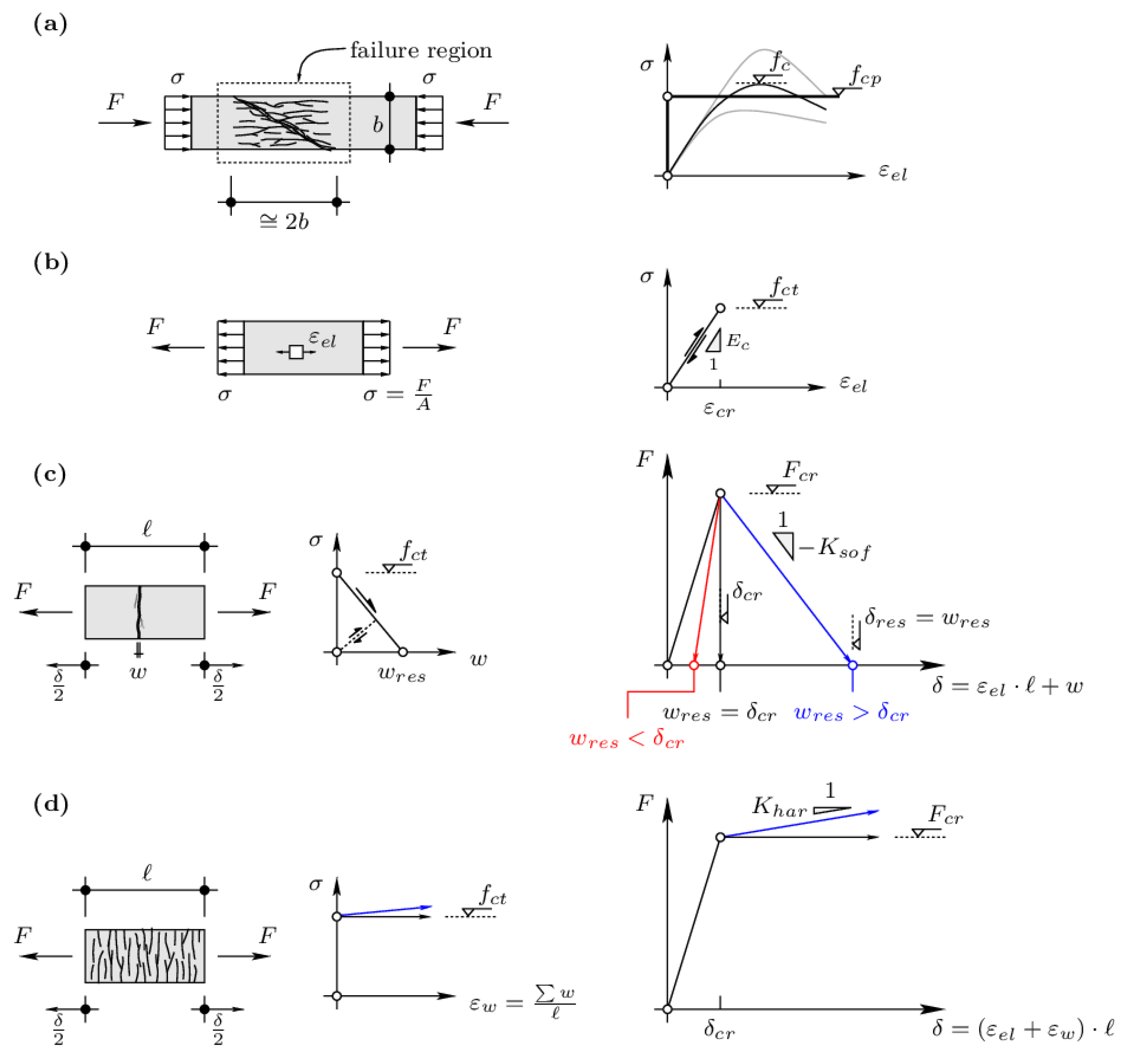
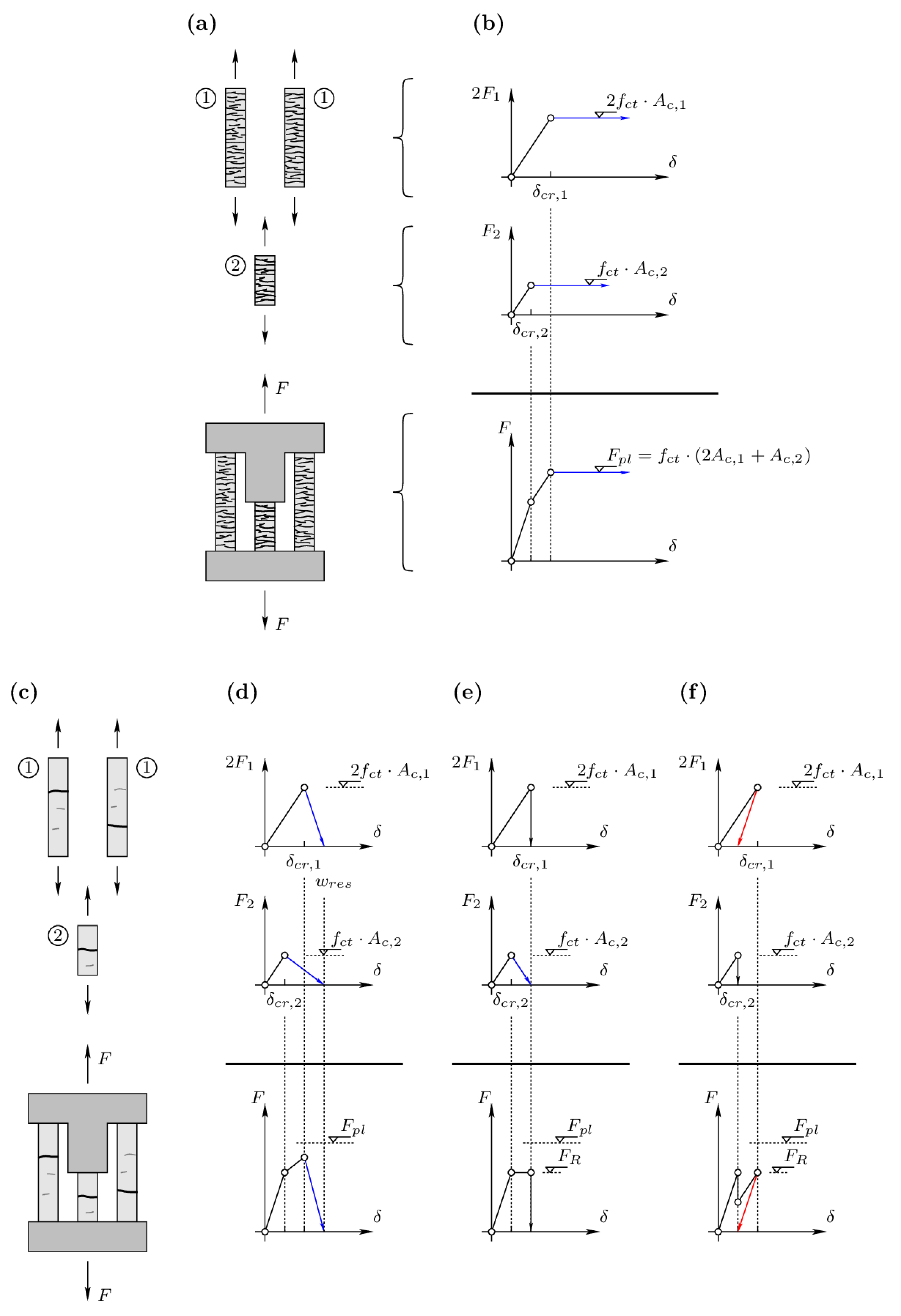
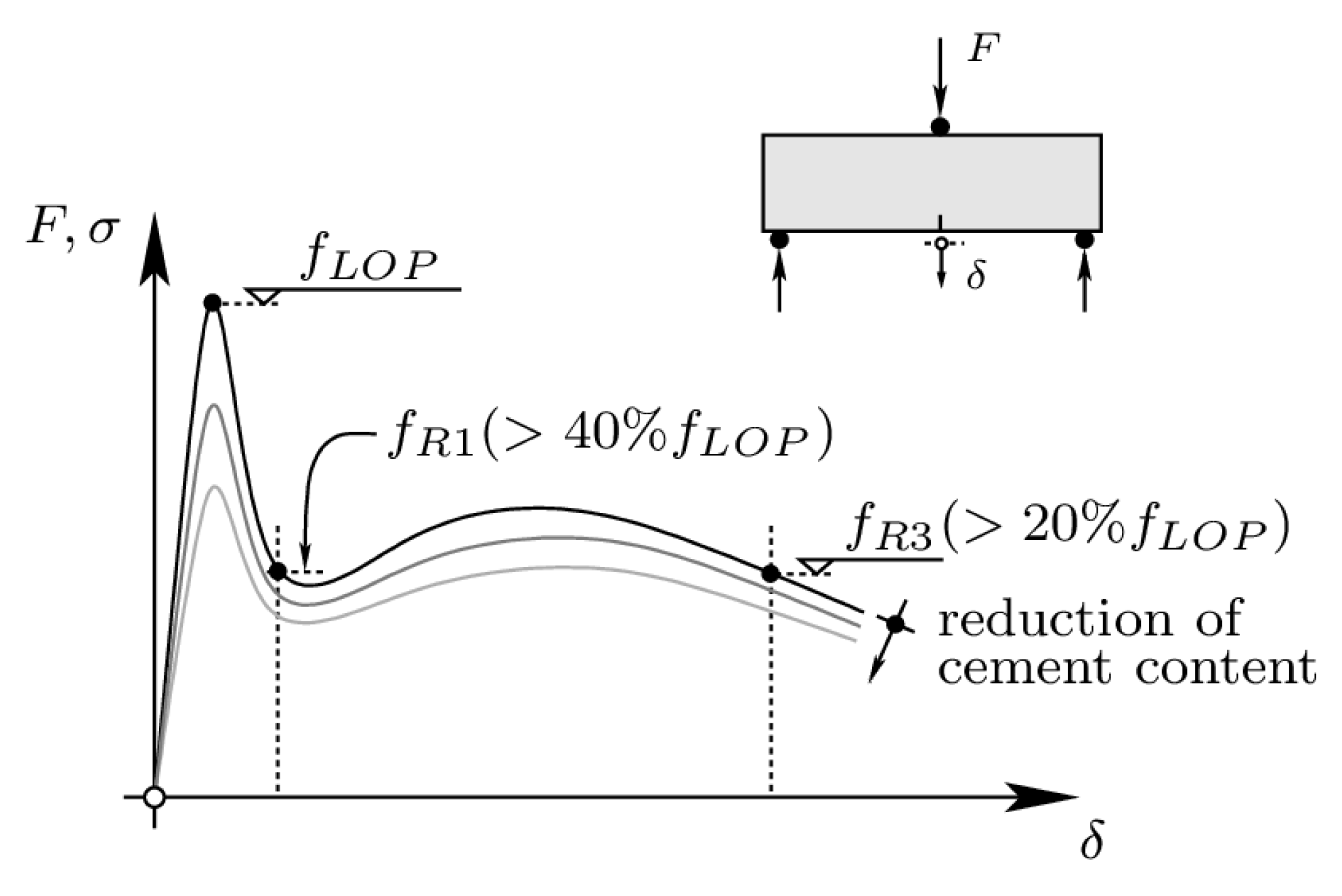
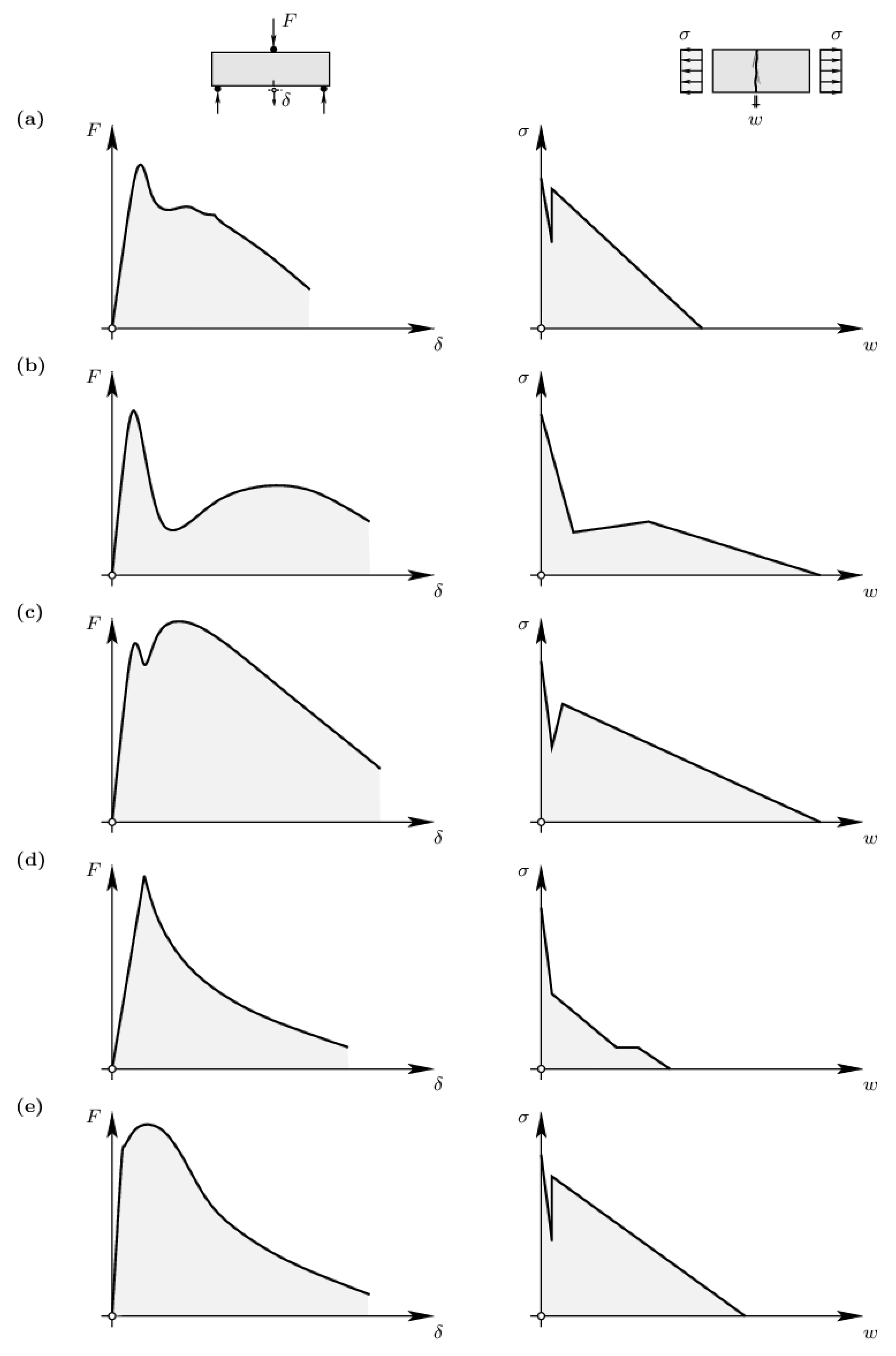
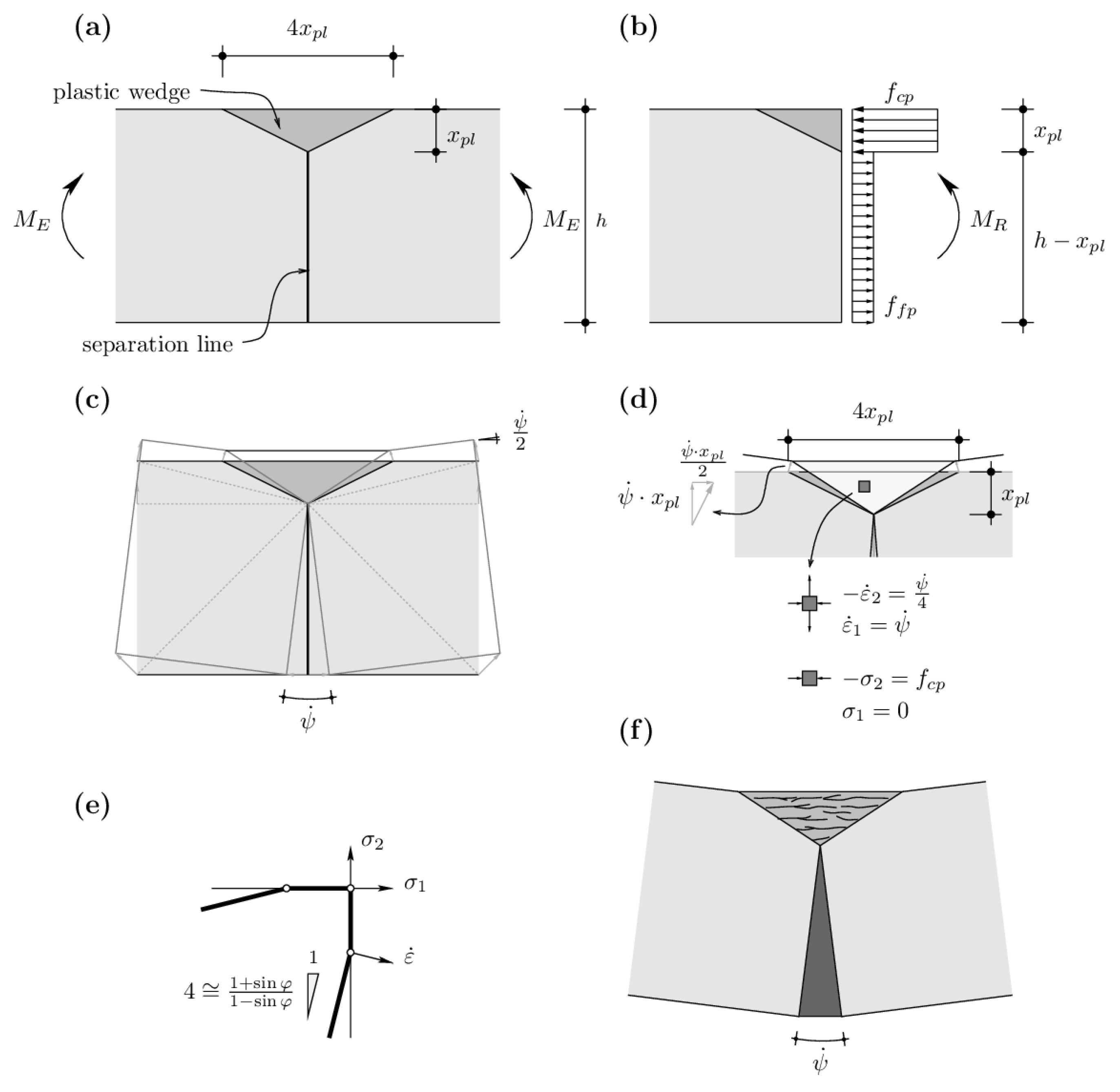
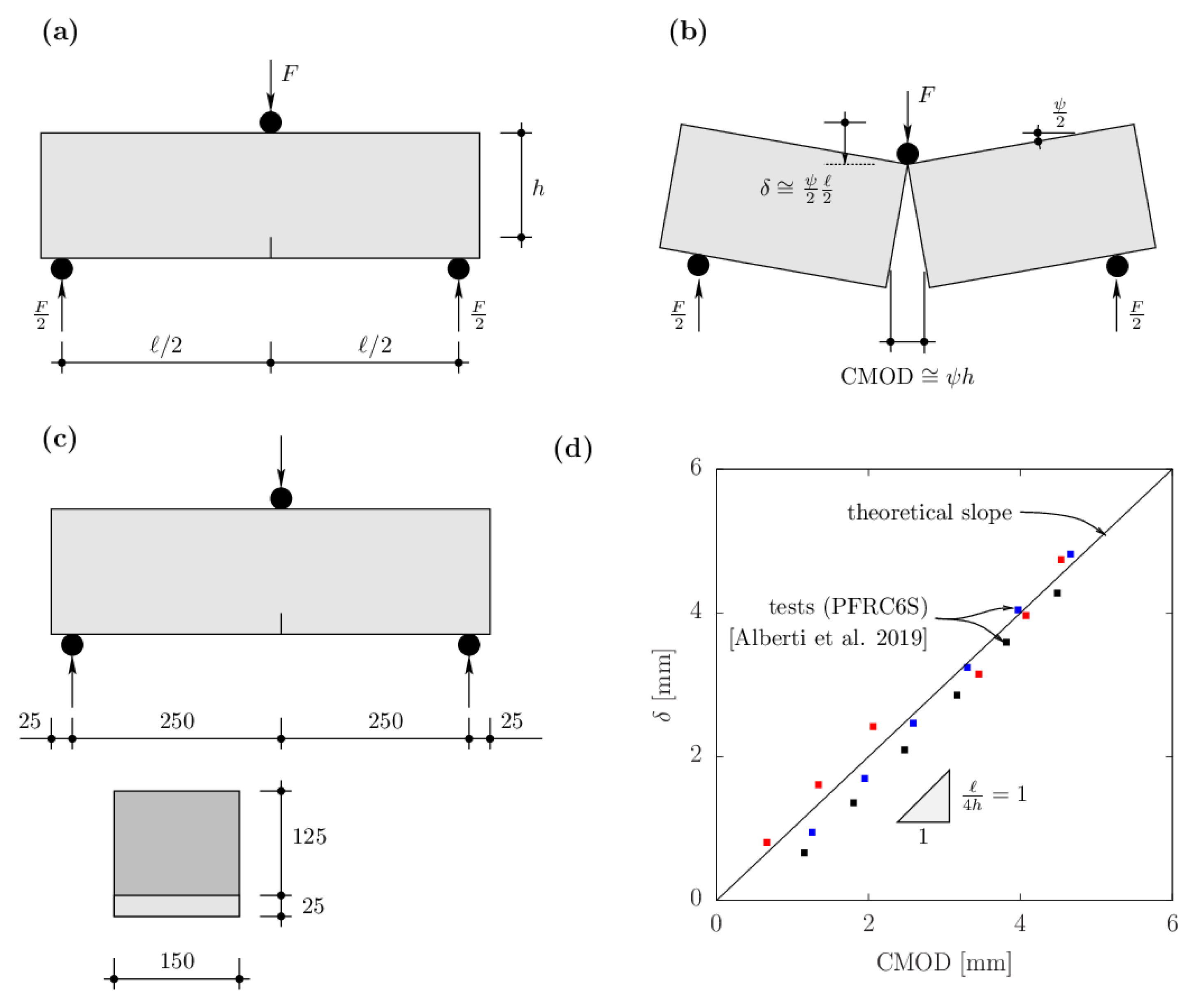
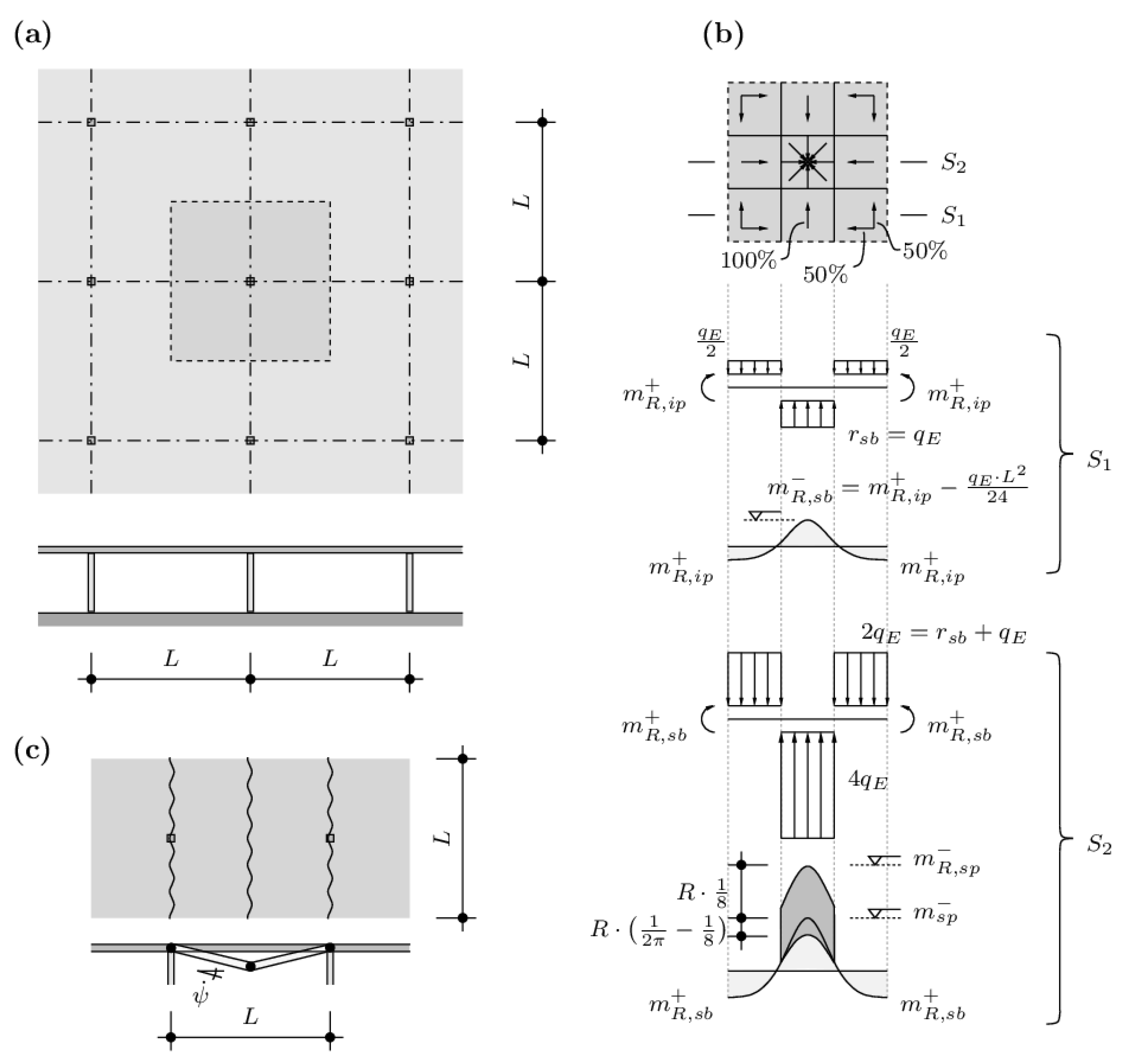
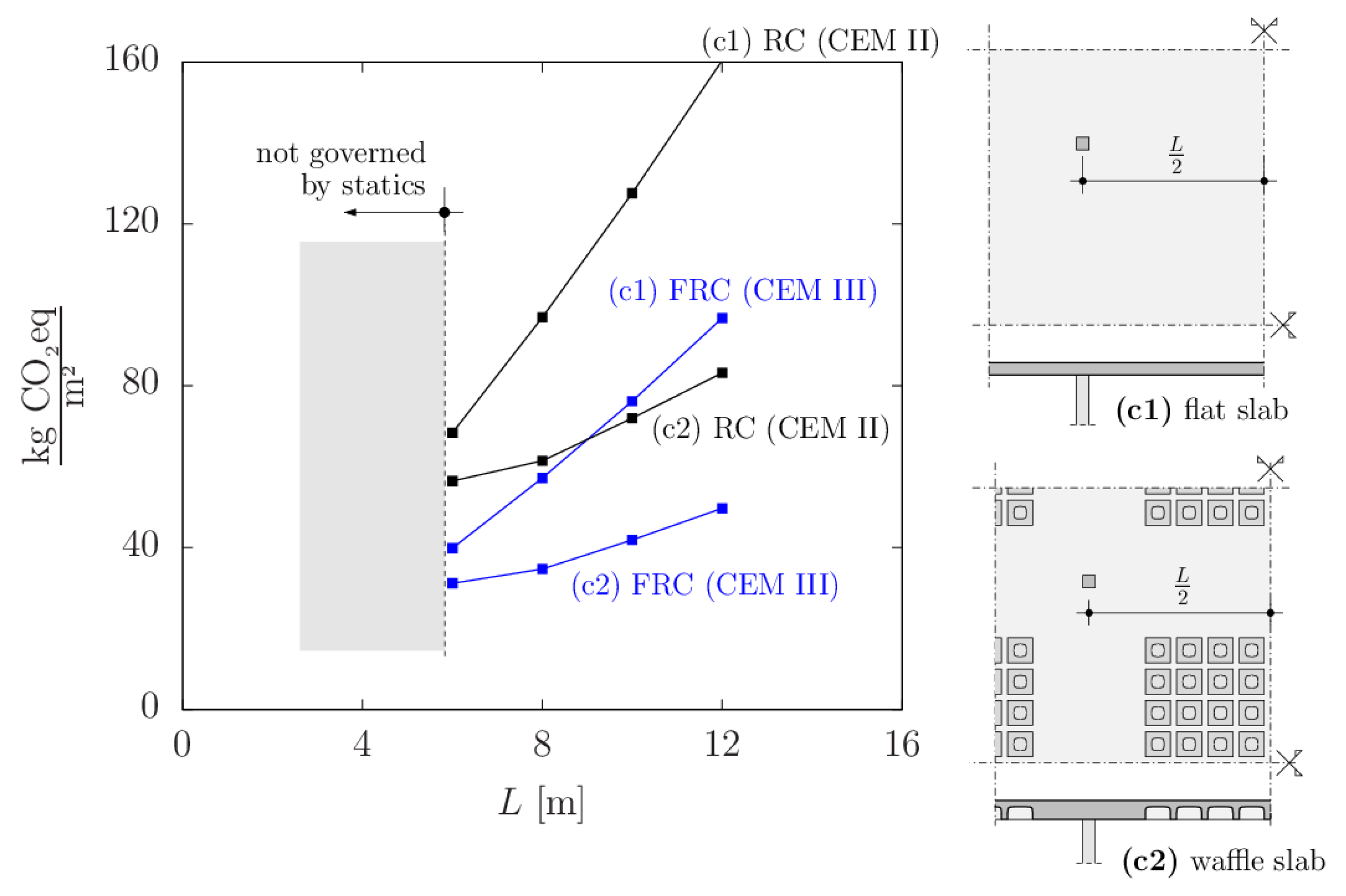
Disclaimer/Publisher’s Note: The statements, opinions and data contained in all publications are solely those of the individual author(s) and contributor(s) and not of MDPI and/or the editor(s). MDPI and/or the editor(s) disclaim responsibility for any injury to people or property resulting from any ideas, methods, instructions or products referred to in the content. |
© 2024 by the authors. Licensee MDPI, Basel, Switzerland. This article is an open access article distributed under the terms and conditions of the Creative Commons Attribution (CC BY) license (https://creativecommons.org/licenses/by/4.0/).
Share and Cite
Alberti, M.G.; Enfedaque, A.; Faria, D.M.V.; Fernández Ruiz, M. The Potential of Fiber-Reinforced Concrete to Reduce the Environmental Impact of Concrete Construction. Appl. Sci. 2024, 14, 6629. https://doi.org/10.3390/app14156629
Alberti MG, Enfedaque A, Faria DMV, Fernández Ruiz M. The Potential of Fiber-Reinforced Concrete to Reduce the Environmental Impact of Concrete Construction. Applied Sciences. 2024; 14(15):6629. https://doi.org/10.3390/app14156629
Chicago/Turabian StyleAlberti, Marcos G., Alejandro Enfedaque, Duarte M. V. Faria, and Miguel Fernández Ruiz. 2024. "The Potential of Fiber-Reinforced Concrete to Reduce the Environmental Impact of Concrete Construction" Applied Sciences 14, no. 15: 6629. https://doi.org/10.3390/app14156629
APA StyleAlberti, M. G., Enfedaque, A., Faria, D. M. V., & Fernández Ruiz, M. (2024). The Potential of Fiber-Reinforced Concrete to Reduce the Environmental Impact of Concrete Construction. Applied Sciences, 14(15), 6629. https://doi.org/10.3390/app14156629







